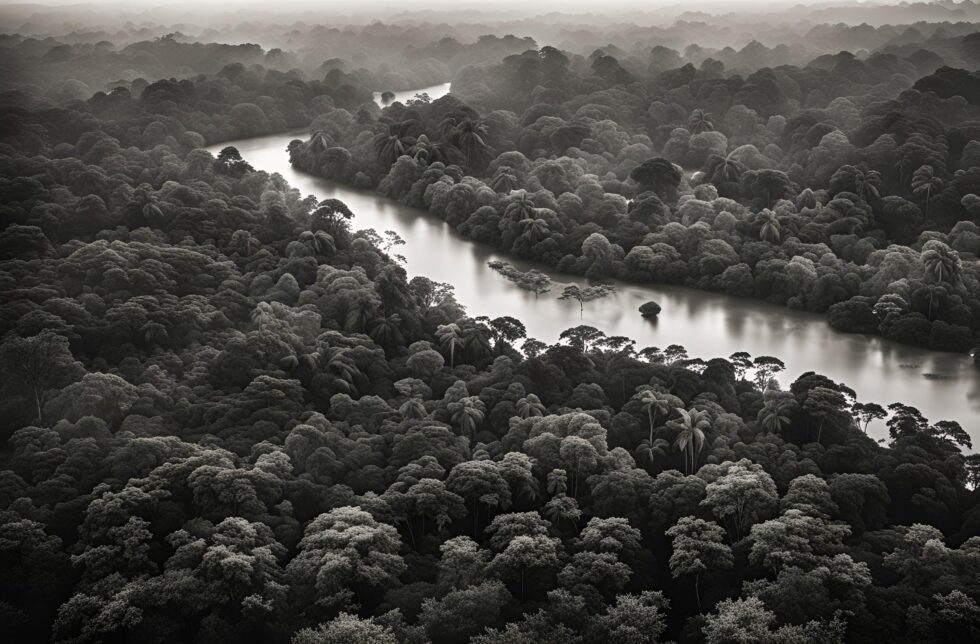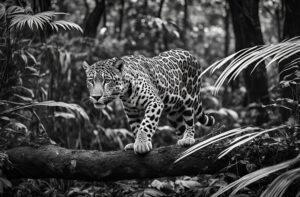
The year was 2023, and the Amazon Rainforest stood as an unyielding testament to nature’s grandeur. Unlike the timeline we know, the forest had never been deforested. Its emerald canopy stretched endlessly, a living, breathing entity that had managed to escape the clutches of human greed and industrialization. This was a world where the Amazon was not just a forest but a vibrant, pulsating heart of the Earth, influencing every aspect of human life.

In this alternate reality, the Amazon Rainforest was revered as the Earth’s lungs. Its untouched expanse had allowed it to flourish beyond imagination. Towering trees, some older than civilizations, formed a dense canopy that housed an unimaginable variety of flora and fauna. The forest was a sanctuary for species that had gone extinct in our timeline. Jaguars prowled silently through the underbrush, while harpy eagles soared majestically above. Indigenous tribes lived in harmony with nature, their ancient wisdom guiding them to protect and cherish the land.
The global climate was remarkably different. The Amazon’s vast expanse acted as a colossal carbon sink, absorbing immense amounts of carbon dioxide and releasing oxygen. This natural balance had a profound effect on the planet’s climate. Global temperatures were significantly lower, and the frequency of extreme weather events had drastically reduced. The polar ice caps were stable, and sea levels had remained consistent. The Amazon’s influence extended beyond the immediate region, creating a ripple effect that stabilized weather patterns across the globe.
Human society had evolved in harmony with nature. The untouched Amazon had inspired a global movement towards conservation and sustainable living. Governments around the world had enacted strict environmental policies, prioritizing the preservation of natural habitats. Renewable energy sources had become the norm, and the use of fossil fuels had dwindled to a mere fraction of what it once was. Cities were designed with green spaces and vertical gardens, seamlessly blending urban life with nature.

The scientific community had made groundbreaking discoveries within the Amazon. Researchers had uncovered countless medicinal plants with the potential to cure diseases that had plagued humanity for centuries. The forest was a living laboratory, offering insights into biology, ecology, and medicine. Indigenous knowledge was highly valued, and scientists worked alongside tribal elders to unlock the secrets of the forest. This collaboration led to the development of new treatments and therapies, revolutionizing healthcare.
Economically, the world had shifted towards a model of sustainability. The Amazon’s untouched resources were a testament to the value of conservation over exploitation. Eco-tourism thrived, attracting visitors from around the globe who sought to experience the untouched beauty of the forest. Local communities benefited from this influx of tourists, creating a symbiotic relationship between humans and nature. The global economy had adapted to prioritize long-term environmental health over short-term gains.
The cultural impact of the untouched Amazon was profound. Art, literature, and music were deeply influenced by the forest’s beauty and mystery. The Amazon became a symbol of hope and resilience, inspiring generations to protect and cherish the natural world. Festivals celebrated the forest’s biodiversity, and stories of its wonders were passed down through generations. The Amazon was not just a forest; it was a living legend, a source of inspiration and awe.
However, this utopian existence was not without its challenges. The preservation of the Amazon required constant vigilance and dedication. Illegal logging and poaching were persistent threats, and governments had to invest heavily in enforcement and education. The global community had to remain united in its commitment to conservation, recognizing that the health of the Amazon was intrinsically linked to the health of the planet.
As the years passed, the Amazon continued to thrive, a testament to what humanity could achieve when it chose to live in harmony with nature. The forest’s untouched expanse was a reminder of the delicate balance that sustained life on Earth. It was a world where the Amazon Rainforest was never deforested, and in this world, humanity had found a way to coexist with the natural world, ensuring a future where both could flourish.




